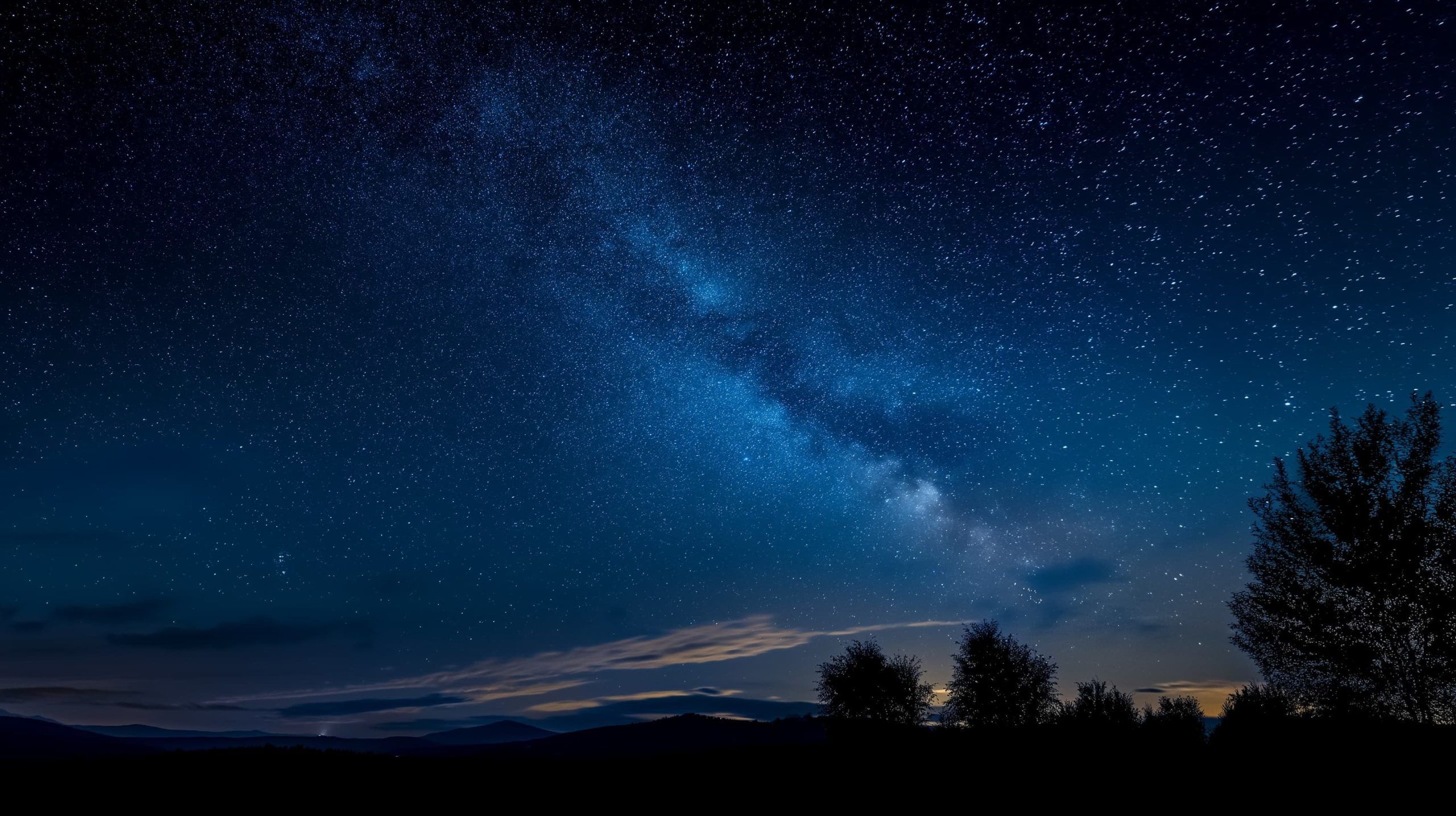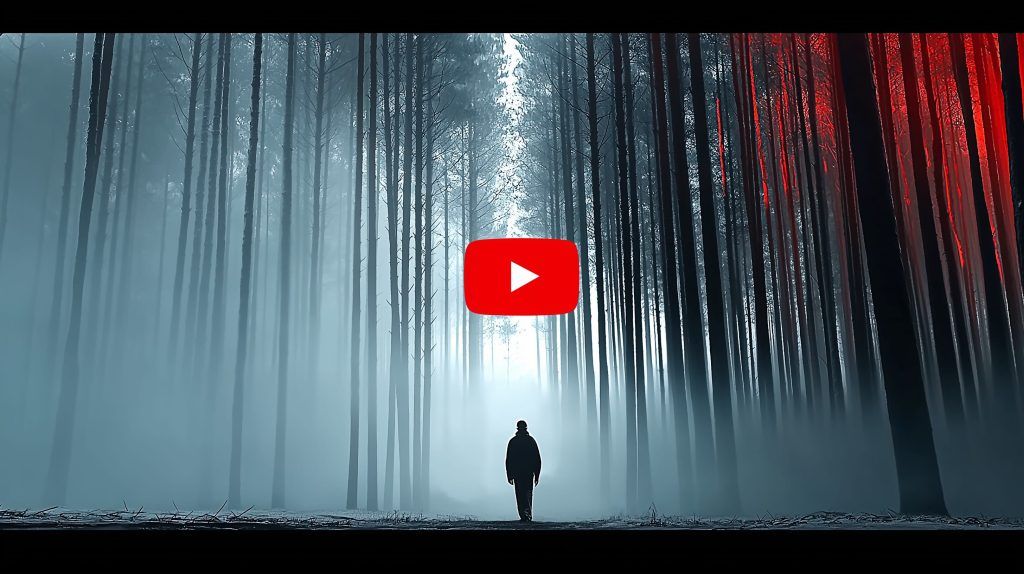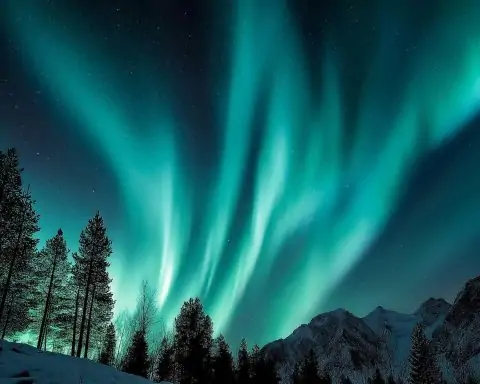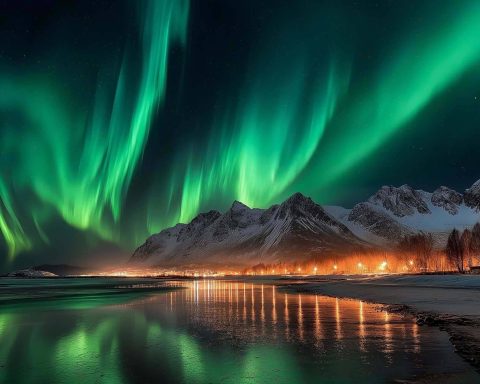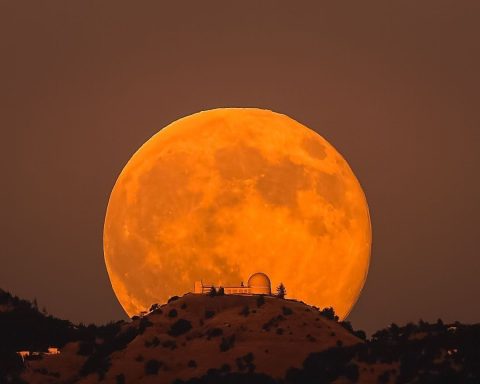- The Perseids, active in early August and building toward their mid-August peak, can reach about 100 meteors per hour at maximum under dark skies, with bright blue fireballs from debris of Comet Swift–Tuttle.
- The 2025 Perseids peak will be hampered by moonlight: the Sturgeon Moon will be full on Aug 9, and the Moon will be 84–90% illuminated around Aug 11–13, washing out dim meteors and reducing the typical 50–75 meteors per hour to mostly bright fireballs.
- Eta Eridanids peak on the night of Aug 7–8, contributing about 3 meteors per hour at best.
- On Aug 7–8, Venus (mag −4.0) and Jupiter (mag −1.9) form a dawn conjunction about 5–6 degrees apart, rising roughly 60–90 minutes before sunrise.
- Mars is magnitude +1.6 and visible as a tiny reddish point low in the western sky just after sunset, fading as it moves away from Earth.
- Saturn rises around 10:30 p.m. and shines at magnitude 0.8 with its ring system tilted, becoming a bright sight in Aquarius as the month progresses toward opposition.
- Saturn and Neptune were in a rare close conjunction around Aug 6, with Neptune at magnitude about 7.8 and observable in the same field of view with a telescope.
- The International Space Station (ISS) will have evening passes in early August 2025 over much of Europe and the northern United States, often visible as a magnitude up to −3 streak across the sky for several minutes.
- SpaceX Starlink satellites launched on Aug 4, 2025 can appear as a bright train of lights after sunset, with another mission planned for Aug 9 that could produce another visible train.
- A CME from Aug 5 could trigger auroras on Aug 8–9, with NOAA issuing a G2 (Moderate) storm watch for Aug 8 and a G1 (Minor) for Aug 9, offering a chance of Northern Lights at high latitudes.
From streaking meteor showers to a dazzling “double planet” meetup at dawn – not to mention a near-full Sturgeon Moon and even a chance of Northern Lights – the sky is serving up something for everyone. Space agencies and astronomers are buzzing about these events: NASA calls one upcoming meteor display “the best of the year” [1], and experts are issuing aurora alerts thanks to a recent solar eruption [2] [3]. Below is your complete guide (in plain language) to what to see on these nights, when and where to look, and why each event is special – with insights from NASA, the American Meteor Society, and other experts along the way.
Meteor Showers: Perseids (and More) Light Up the Sky
August means Perseids – one of the most beloved meteor showers of the year – and they’re now active and ramping up toward their mid-August peak. The Perseids are famous for “bright blue meteors — and lots of them,” as University of Warwick astronomer Don Pollacco notes [4]. In ideal years, this shower can unleash up to ~100 shooting stars per hour at its peak under dark skies [5]. NASA even describes the Perseids as “the best meteor shower of the year” for their plentiful, fast, and colorful fireballs streaking through the atmosphere [6]. Each Perseid meteor is a tiny fragment from Comet Swift–Tuttle burning up overhead in a flash of light.
2025 is a tricky year for the Perseids, however, due to moonlight. A bright full Moon (the Sturgeon Moon on Aug. 9) will be in the sky during the Perseids’ peak nights, acting like a giant cosmic floodlight. Astronomers warn that the 84–90% illuminated Moon around Aug 11–13 “will brighten the sky and wash out the dimmer meteors,” making many faint shooting stars hard to see [7]. In fact, the American Meteor Society notes the bright Moon will “severely compromise” the Perseids’ usual counts at maximum, leaving only the very brightest fireballs visible [8]. Instead of 50–75 meteors per hour that might normally be expected at the peak [9], skywatchers will likely only catch the standout fireballs cutting through the lunar glow. The good news? The Perseids tend to produce plenty of these fireballs. “The Perseids result from bigger particles than a lot of other showers,” explains Bill Cooke of NASA’s Meteoroid Environment Office, which means more “bright fireballs” that can still shine through the moonlight [10]. So even though many faint meteors will be washed out, don’t be surprised if a few spectacular Perseid fireballs blaze across the sky during the night – those will be the ones to remember.
What to expect on Aug 7–8: Even now (several days before the Perseid peak), the shower is active and any Perseid meteor is a bonus. We have “entered the Perseid meteor stream,” meaning you might spot Perseids “anytime now” in early August [11]. On the nights of Aug 7–8, meteor activity is on the upswing: if you watch the sky after local midnight until dawn, you could catch on the order of 10–20 meteors per hour under dark-sky conditions [12]. This count includes a mix of early Perseids plus other random “sporadic” meteors (which are also more frequent this time of year – roughly double their springtime rates) [13]. Keep in mind, the Moon’s glare will significantly reduce the visible meteors. The Moon on Aug 7–8 is a waxing gibbous over 95% full, rising in early evening and staying up all night (setting only around sunrise) [14]. In practical terms, that means no truly dark hours on these nights – the sky will be bathed in moonlight, and only the brighter meteors will stand out. Your best strategy is to focus on the brightest meteors (don’t expect the faint “shooting stars” to be easy to see). If you’re patient, even a handful of vivid Perseid streaks or the odd fireball can make your late-night vigil worth it [15].
Other meteor showers are also contributing a few shooting stars this week. The Southern Delta Aquariids, which peaked in late July, are now tapering off – at their peak they produced ~10–20 meteors/hour [16], but by early August they’ll add only a few faint meteors, mainly for observers in the Southern Hemisphere [17]. Another minor shower, the Alpha Capricornids (peaked around July 29), is sparse in number but famous for slow, bright bolides. You might spot an occasional Capricornid fireball in early August – distinguishable by its relatively slow speed and yellowish glow compared to the swift Perseids [18]. And as a special bonus, a little-known meteor shower called the Eta Eridanids is reaching its modest peak on the night of Aug 7–8. This shower is not very prolific – about 3 meteors per hour at best – but it coincides with the Perseid activity [19]. If you’re out before dawn on Aug 8, keep an eye toward the southeastern sky (near the constellation Eridanus, low on the horizon). Any meteors you see coming from that area might be Eta Eridanids [20]. Again, this is a minor display, so temper expectations, but meteor enthusiasts may enjoy knowing it’s happening in the background.
Meteor Viewing Tips: To maximize your meteor sightings, find as dark a sky as possible (away from city lights) and give your eyes time to adapt to the dark. Plan to watch after midnight (when the Perseus constellation – the Perseids’ radiant – climbs higher). Lie back, scan a wide portion of sky, and be patient. Even with the Moon out, focus on spotting a few bright meteors rather than many faint ones. And mark your calendar: in 2026, the Perseids will peak under a new Moon, which should make for an excellent show [21]. But for now, enjoy the summer meteors we can catch – each streak is a tiny piece of cosmic debris putting on a fleeting show just for us.
Planetary Parade: Planets (and the Moon) on Display
While meteors streak overhead, the planets are putting on their own show across the night. In fact, almost every major planet is visible at some point during these August nights [22]. Here’s what to look for on Aug 7–8:
- Mars (early evening): The Red Planet is barely hanging on to visibility after sunset. Mars is now far on the other side of the Sun from Earth and has faded to a relatively dim magnitude +1.6 [23]. If you have an unobstructed view toward the west at dusk, you might glimpse a tiny reddish point very low on the horizon, shortly after sunset. It sets quickly, so you’ll need to look immediately after twilight begins. (Don’t be discouraged if you miss it – Mars will soon be lost in the Sun’s glare completely, and will reappear in the morning sky later this year.)
- Mercury (not visible): The innermost planet is a no-show this week. Mercury is near superior conjunction (essentially behind the Sun from our viewpoint) and is totally obscured by the Sun’s glare in early August [24]. It won’t re-emerge until mid-to-late August, when it will pop up in the morning sky. In fact, Mercury will make one of its best morning appearances of the year toward the end of August [25] – but for Aug 7–8, scratch Mercury off your list.
- Saturn (late night until dawn): Saturn takes center stage once the late-night hours roll around. The Ringed Planet rises around 10:30 p.m. local time in early August [26], and by midnight it will be shining well above the eastern horizon. Look for a steady, yellowish “star” in the constellation Aquarius (adjacent to Pisces) – that’s Saturn, glowing at about magnitude 0.8 (bright enough to spot easily) [27]. Saturn is currently one of the brightest points in that area of sky (outshone only by the Moon right now). Importantly, Saturn is nearing its opposition later this month, meaning it’s particularly bright and visible all night – this is an excellent time to observe it [28]. If you have a small telescope, definitely point it at Saturn! Even a modest scope will reveal Saturn’s iconic rings (currently tilted at a generous angle) [29] and often a few moons (like Titan). Fun fact: Saturn is experiencing a rare meetup of its own – an exceedingly close conjunction with distant Neptune. On Aug 6, Saturn and Neptune appeared extremely close together in the sky (reaching an exact alignment) [30]. Neptune is too faint to see with the naked eye (around magnitude 7.8) [31], but around these dates an amateur astronomer with a decent telescope can actually catch Saturn and Neptune in the same field of view [32]! Neptune will look like a tiny blue-gray “speck” right near Saturn [33]. This is essentially a telescope-only event, but it’s a neat piece of celestial geometry – two planets nearly 2.7 billion miles apart, appearing side-by-side. Even without a telescope, enjoy Saturn gleaming steadily all night long. (Trivia: Saturn’s largest moon Titan can be seen in telescopes as a faint point nearby. Around Aug 2–3 there was even a special transit of Titan’s shadow across Saturn’s disk – a rare event for avid observers [34].)
- Venus & Jupiter (brilliant dawn duo): Perhaps the biggest “wow” moment comes before sunrise, with the two brightest planets in our sky putting on a dazzling duet. Venus and Jupiter have been approaching each other for a stunning conjunction, and on the mornings of Aug 7–8 they form a striking pair in the east. If you step outside about 60–90 minutes before sunrise and look toward the east-northeastern horizon, you’ll easily spot Venus – the famed “Morning Star” – blazing super-bright at roughly magnitude –4.0 [35]. Just above it will be Jupiter, not quite as brilliant (around mag –1.9) but still the second-brightest point in the pre-dawn sky [36]. On Aug 7–8, Venus and Jupiter are only about 5–6 degrees apart (roughly the width of three fingers held at arm’s length) [37]. To the eye, they look like a pair of cosmic “car headlights” low on the horizon, with Venus below and Jupiter just above. Each morning, the two planets are creeping closer together. NASA notes the pair will “appear to graze each other” around mid-August, reaching their closest approach on Aug 11–12 when they’ll be only ~1° apart – so close you could cover both with your pinky finger [38] [39]. This Venus–Jupiter meetup is one of the highlight events of the month. It’s so eye-catching that some skywatchers joke such a tight pairing might even fool casual observers into reporting “twin UFOs” hovering at dawn [40]! Don’t miss this spectacle if you’re an early riser (or willing to become one for a morning or two) – it’s visible worldwide, anywhere you have a clear eastern view and darkness before dawn [41]. The main challenge is their low altitude – they’re very low on the horizon, so find a spot with a flat, unobstructed view to the east (no tall buildings or trees in the way) [42]. Start looking around 4:00–5:00 a.m. local time (exact timing depends on your location and sunrise) [43]. Venus will pop out first (it’s incredibly bright), and Jupiter will be nearby, slightly higher. No telescope needed – they shine brightly to the naked eye, though binoculars can help you pick them out earlier in the twilight. This conjunction is special; Venus and Jupiter won’t be this close and conveniently placed in the sky again for several years [44]. Enjoy their cosmic “pas de deux” now, and mark your calendar for Aug 11–12 when they reach peak rendezvous!
- The Moon: Don’t forget the Moon – it’s a prominent (and brilliant) player in this week’s sky. On Aug 7–8 the Moon is a waxing gibbous, swelling from ~95% to 99% illuminated as it marches toward full on August 9 [45]. August’s full Moon is traditionally called the “Sturgeon Moon,” a name given by Native American fishing tribes for the sturgeon that were plentiful in late summer [46]. Each evening around Aug 7–8, you’ll see this bright Moon rise in the southeast in the early evening (roughly an hour or so after sunset), and it stays up all night (setting near sunrise). Its glow will overwhelm many faint stars and unfortunately make meteor-spotting or aurora-spotting more challenging [47]. However, the Moon itself is a gorgeous sight. Take a moment to enjoy its silvery light, or point binoculars at it – you’ll easily see the Moon’s patchwork of dark “seas” (maria) and bright craters. The contrast along the day-night line (the terminator) is especially beautiful through binoculars or a telescope [48]. Pro tip: The best time to appreciate a full (or near-full) Moon is at moonrise, when it’s near the horizon. Around Aug 7–8, watch for the Moon rising shortly after sunset – it may appear larger-than-normal looming near the horizon (an optical trick known as the “Moon illusion”) [49]. Snap a photo if you can; the amber-colored rising Moon against the twilight sky can be breathtaking. And keep an eye out on Aug 9 when the Moon reaches official full phase (exactly full at 3:55 a.m. ET on Aug 9 [50]) – Saturn will be glowing just a little to its east, a nice pairing for night owls or early risers that morning.
Aurora Outlook: Will the Northern (and Southern) Lights Show Up?
Whenever the Sun is active, skywatchers start wondering about the Aurora Borealis (Northern Lights) and Aurora Australis (Southern Lights). We are currently near the peak of the Sun’s 11-year activity cycle (Solar Cycle 25), and the Sun has indeed been busy this week. In fact, a solar eruption on Aug 5 has space weather forecasters issuing a heads-up for potential auroras around Aug 8.
Here’s what happened: On August 5, an M4-class solar flare erupted from a sunspot nearly centered on the Sun’s disk [51]. This flare blasted a coronal mass ejection (CME) into space – essentially a huge cloud of charged solar plasma. Initially it looked like the CME was heading mostly away from Earth, but models now suggest Earth might get grazed by this CME. According to a Space Weather Prediction Center bulletin, the combined effects of this CME and an arriving high-speed solar wind stream from a coronal hole are expected to cause geomagnetic disturbances on Aug 8–9 [52]. In fact, NOAA (the U.S. agency that monitors space weather) has issued a geomagnetic storm watch for those dates: a G2 (Moderate) storm watch for Aug 8, and a G1 (Minor) for Aug 9 [53]. This means there’s a decent chance of enhanced auroras at high latitudes, possibly dipping into lower latitudes than usual if the storm materializes.
What this means for skywatchers: If you live in a far-northern location – say Canada, Alaska, Northern Europe, or the far Upper Midwest/Northeast U.S. – you should be alert for auroras on the night of Aug 8 (and possibly Aug 9). The UK’s space weather experts at the British Geological Survey noted “an increased chance of seeing the aurora Friday and Saturday night, August 8–9,” especially for those in Scotland, northern England and Northern Ireland, assuming clear dark skies [54]. Space weather forecasters told media that if the CME’s impact is just right, Northern Lights could be seen as far south as northern Michigan or Maine in the U.S. [55] (roughly around 45° N latitude) – essentially the northern-tier states. Auroras would also likely be active across Scandinavia, Iceland, and similar latitudes. In the Southern Hemisphere, this same disturbance could spark Aurora Australis visible from high-southern latitudes, like Tasmania or southern New Zealand, on those nights.
Keep in mind, aurora predictions are not guarantees. The timing of the CME’s arrival has some uncertainty (model estimates suggest impact around Aug 8 06:00 UTC ± 8 hours [56]). If it arrives during local daytime, observers will have to wait until darkness falls again to potentially see the effects. The strength of the geomagnetic storm can also vary; NOAA’s G2 watch implies auroras could reach slightly lower latitudes, but it’s not a huge storm. Still, if you’re in a region that could possibly see auroras, it’s worth keeping an eye on the northern (or southern) horizon on Aug 8–9. Auroras often appear as a greenish or reddish glow or shifting curtains of light. For the best chance, find a dark location away from city lights with a clear view toward the geomagnetic pole (north for Northern Hemisphere, south for Southern). Be patient – auroral activity can ebb and flow over the course of hours. You might also monitor online aurora dashboards (such as NOAA’s aurora forecast maps [57]) or social media, where alerts often spread quickly when the lights are active.
Expert tip: A moderate geomagnetic storm could produce auroras visible farther from the poles than usual, but whether they reach, say, the latitude of New York or Berlin depends on storm intensity. As one aurora chaser quipped about this somewhat sideways CME, “just Solar Cycle 25 things” – unpredictable! [58]. Nonetheless, with the Sun nearing its peak activity, aurora sightings are always possible. So if your skies are clear on Aug 8/9, take a quick look to the north after dark – you just might catch a faint auroral glow, even if it’s not a full-blown light show. And if you happen to live under the auroral oval (e.g. northern Canada, Scandinavia), you could be in for a treat of dancing green lights. Fingers crossed for a good solar wind impact and happy aurora hunting to those in the right place!
(One more note: Auroras or not, that bright Moon will be up those nights, which can interfere by adding sky glare. If a geomagnetic storm is underway, the strongest auroras can still be visible even with some moonlight – but very faint auroras might be harder to discern. So again, focus on the possibility of a moderate display, and hope the solar storm delivers!).
ISS and Satellites: Man-Made “Stars” to Spot
Not every moving light in the night sky is natural – human-made satellites are also crossing overhead, and spotting them can be a fun addition to your skywatching nights. The most impressive of all is the International Space Station (ISS), which orbits ~400 km above Earth and is often visible to the naked eye. In fact, the ISS is frequently the brightest object in the night sky after the Moon, thanks to its huge reflective solar panels [59]. To your eyes, it appears as a steady, fast-moving “star” – basically a bright white point of light gliding across the sky in a matter of a few minutes. Unlike an airplane, it has no blinking lights and no contrail; unlike a meteor, it moves at a constant moderate speed (taking ~3–6 minutes to cross from one horizon to the other) [60]. If you see a very bright light steadily cruising across the stars with no blinking, there’s a good chance it’s the ISS.
When and where to see the ISS: The ISS orbits Earth about once every 90 minutes (≈16 orbits per day) and flies over most populated regions (it reaches as far north/south as ~51.6° latitude) [61]. It’s only visible when your sky is night but the station is still catching sunlight – typically within a couple hours after sunset or before sunrise. These viewing windows come in cycles that depend on the ISS’s orbit and the season. In early August 2025, many mid-northern latitude locations (like much of Europe and the northern United States) are getting evening passes of the ISS shortly after dusk [62]. For example, in the first week of August the ISS makes a series of visible passes in the early-to-mid evening over parts of North America and Europe – often appearing in the west or northwest and traversing the sky before fading out toward the east [63]. At more southerly latitudes (or later in the month), the pattern switches to pre-dawn passes instead [64]. The key point is that visibility varies by date and location – but chances are, on any given week, the ISS will be observable at certain times somewhere in the world.
To find out if and when the ISS will fly over your area on Aug 7–8, the best approach is to use an online tool or app. NASA’s “Spot the Station” website is an excellent resource [65] – you can enter your city or coordinates, and it will list all upcoming ISS sighting opportunities, including where in the sky the station will appear (which direction to look), how high it will get, and how long it will be visible [66]. There are also smartphone apps that send alerts for ISS passes. Once you have a predicted time, just go outside a few minutes early and look toward the listed direction. At the given time, the ISS will emerge as a bright, non-twinkling light moving steadily across the sky. A good pass can be extremely bright – the ISS can reach about magnitude –3, rivaling Venus in brilliance [67]. It’s quite a sight to watch – and it’s pretty amazing to realize there are astronauts aboard that fast-moving “star” flying over your head!
If you’re out during the right time (say, meteor watching in the pre-dawn hours, or just after dinner in the evening) and spot the ISS by chance, you’ll now know what it is. Remember: it doesn’t blink, it doesn’t leave a trail, and it silently glides from horizon to horizon. Some passes go nearly overhead (very bright); others stay low near the horizon. If you do see it, give a friendly (figurative) wave – there are usually 7 crew members aboard the ISS, humanity’s orbiting laboratory.
Other satellites: The night sky is filled with many other satellites too. On any clear night after twilight, if you watch patiently, you’ll likely notice a few fainter moving pinpoints trekking across the stars [68]. Most are much dimmer than the ISS – often you need a dark sky and some patience to catch them. But a few phenomena are noteworthy:
- Starlink “trains”: SpaceX frequently launches batches of Starlink internet satellites. In the days right after a launch, these satellites can appear as a remarkable train of lights moving in formation [69]. Dozens of bright dots follow one another in a line – an eerie sight that has, in the past, prompted UFO reports from surprised observers [70]. Over weeks, the satellites spread out and dim as they raise orbits, so the “train” effect fades. But if a launch happened recently, keep an eye out in the hour or two after sunset or before dawn (when satellites are sunlit against a dark sky) for a straight line of tiny lights moving together. As it happens, SpaceX did launch a new batch of Starlink satellites on Aug 4, 2025 [71], so around Aug 7–8 it’s possible some of those may still be clumped together and visible as a string of lights. Additionally, another Starlink mission is scheduled for Aug 9 from California [72], which might create a visible train a day or two after (mainly for those in the launch region’s latitude). These Starlink trains are transient but striking if you catch one.
- Tiangong Space Station: China’s Tiangong space station is smaller and generally fainter than the ISS, but it can occasionally be visible. On a good, high pass it might reach around magnitude 0 to +2 – not as bright as the ISS (which is usually negative magnitudes), but about as bright as the major stars [73]. If you’re an enthusiast, you can look up Tiangong’s passes for your location as well (some satellite tracking apps include it). You’ll need a darker sky to spot it, but it’s another human outpost orbiting above. Seeing Tiangong isn’t as easy as seeing the ISS, but under the right conditions (dark sky, favorable pass) you might catch this moving “star” as well.
- Satellite flares: Certain satellites can produce dramatic flares – sudden brief bursts of brightness – when their reflective panels catch the Sun at just the right angle. In the past, the Iridium communications satellites were famous for this, producing brilliant flashes that could outshine Venus. Those classic Iridium flares are mostly history now (since that satellite fleet was retired), but other spacecraft or even discarded rocket bodies can occasionally produce similar glints [74]. These flares last only a few seconds but can be very bright – sometimes startling an observer who sees a star suddenly flash and vanish. If you notice a brief flash of light in the sky that’s here and gone, you likely witnessed a satellite momentarily reflecting sunlight. There are apps and websites that predict some of these flares as well, though they are less common nowadays without the Iridiums. Still, it’s neat to know that a quick flash in the corner of your eye might have been a solar panel catching the Sun!
- How to tell satellites from planes or meteors: A quick recap: airplanes usually have blinking red and/or green lights and move relatively slowly across the sky (often you’ll hear engine noise eventually). Satellites have no blinking lights and typically move at a steady, moderate pace with a constant light (no sparkles or trails) [75] [76]. Meteors are extremely fast, streak by in a split second with a bright trail, and often vary in brightness (and of course, meteors don’t persist – they’re one-and-done). Knowing these clues can help you distinguish an artificial satellite from an airplane or a meteor when you’re gazing upwards.
In summary, while you’re out enjoying the natural night sky, don’t be surprised if you also spot a few satellites silently zipping by. They’re a reminder that we have quite a bit of company upstairs – a human-made presence orbiting Earth, joining the cosmic parade above. From the ISS with astronauts onboard, to the newest Starlink chains, to the occasional space station or satellite flare, these man-made “stars” add an extra dynamic element to the night. Happy spotting!
Eclipses and Comets: Nothing Notable This Week
What about eclipses or comets – any rare events happening on Aug 7–8? The short answer: No, not this week. No major eclipses are occurring on these dates [77], and there are no bright comets gracing the night sky at the moment [78]. Both the Sun and Moon will put on some great eclipses later in the year (for instance, 2025 features a solar eclipse in September and a lunar eclipse in March, though neither falls on these August dates). But for the nights in question, you won’t have any eclipse to watch. As for comets, while there are always dozens of faint comets being tracked by astronomers, none are currently visible to the casual observer as a big bright object. (The last widely observed comet was earlier this year, and the next potentially bright comet isn’t expected until perhaps 2026 or beyond.) So, unless you have a large telescope and are hunting faint fuzzy comets, you can safely ignore comets and eclipses for this week’s skywatching plans.
(In case you’re wondering, why no big comets now? Bright comets are relatively rare. We typically get a bright naked-eye comet only every few years. Right now, we’re in a bit of a lull. But stay tuned – the cosmos always has surprises in store!)
Bottom Line: The nights of August 7–8, 2025 offer a smorgasbord of celestial sights. You’ve got meteors (the Perseids are building momentum – watch for those fireballs, even if the Moon dulls the show), a brilliant planetary meetup at dawn (Venus and Jupiter shining side by side), a nearly-full Moon lighting up the landscape (gorgeous to look at, even as it washes out faint stars), and even the potential for auroral glows at high latitudes if a solar storm arrives on cue. Add to that the ISS flying over many locations and the possibility of catching satellites or a chain of Starlinks, and there’s plenty to gaze at. As one NASA skywatching newsletter put it: Jupiter and Venus have a morning meetup, we check out this year’s Perseid meteor shower, and peek into the future of our own Sun [79] – in other words, there’s something for everyone up there. So grab a lawn chair or blanket, find a dark patch of sky, and enjoy the show! Whether you’re an avid amateur astronomer or a casual stargazer, these nights promise a little taste of everything happening above. Clear skies and happy skywatching!
Sources: Official NASA skywatching bulletins, American Meteor Society forecasts, Space Weather Prediction Center alerts, and expert commentary from astronomers and space agencies [80] [81] [82] [83] (see inline citations). All information is based on the latest forecasts and predictions as of early August 2025 – always double-check local conditions, and here’s to a stellar night under the stars!
References
1. dayton247now.com, 2. www.swpc.noaa.gov, 3. geomag.bgs.ac.uk, 4. dayton247now.com, 5. ts2.tech, 6. dayton247now.com, 7. ts2.tech, 8. ts2.tech, 9. dayton247now.com, 10. dayton247now.com, 11. ts2.tech, 12. ts2.tech, 13. ts2.tech, 14. ts2.tech, 15. ts2.tech, 16. ts2.tech, 17. ts2.tech, 18. ts2.tech, 19. www.travelandleisure.com, 20. www.travelandleisure.com, 21. ts2.tech, 22. ts2.tech, 23. ts2.tech, 24. ts2.tech, 25. ts2.tech, 26. ts2.tech, 27. ts2.tech, 28. ts2.tech, 29. ts2.tech, 30. ts2.tech, 31. ts2.tech, 32. ts2.tech, 33. ts2.tech, 34. ts2.tech, 35. ts2.tech, 36. ts2.tech, 37. ts2.tech, 38. ts2.tech, 39. science.nasa.gov, 40. ts2.tech, 41. ts2.tech, 42. ts2.tech, 43. ts2.tech, 44. ts2.tech, 45. ts2.tech, 46. www.travelandleisure.com, 47. ts2.tech, 48. ts2.tech, 49. www.travelandleisure.com, 50. www.space.com, 51. www.space.com, 52. www.swpc.noaa.gov, 53. www.swpc.noaa.gov, 54. geomag.bgs.ac.uk, 55. www.space.com, 56. www.space.com, 57. www.swpc.noaa.gov, 58. www.space.com, 59. ts2.tech, 60. ts2.tech, 61. ts2.tech, 62. ts2.tech, 63. ts2.tech, 64. ts2.tech, 65. ts2.tech, 66. ts2.tech, 67. ts2.tech, 68. ts2.tech, 69. ts2.tech, 70. ts2.tech, 71. spaceflightnow.com, 72. www.space.com, 73. ts2.tech, 74. ts2.tech, 75. ts2.tech, 76. ts2.tech, 77. ts2.tech, 78. ts2.tech, 79. science.nasa.gov, 80. dayton247now.com, 81. ts2.tech, 82. www.swpc.noaa.gov, 83. geomag.bgs.ac.uk
